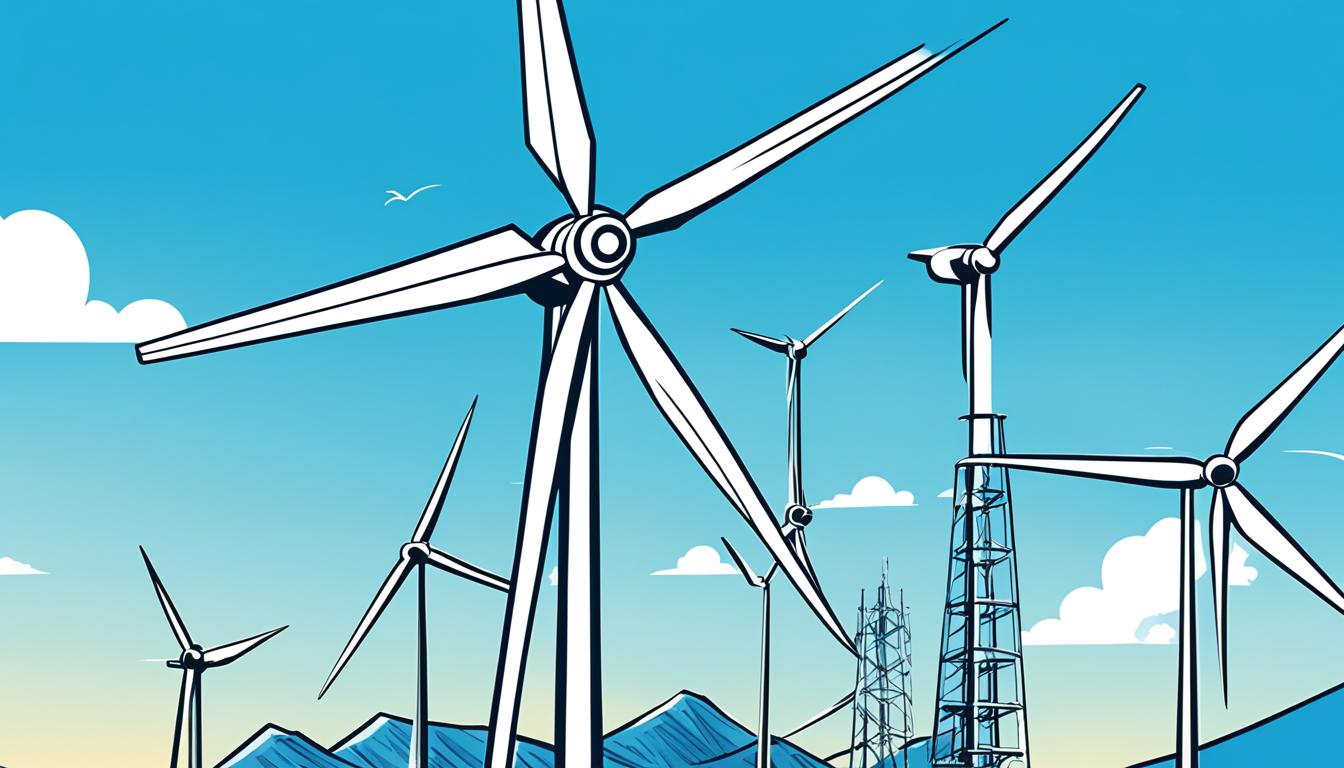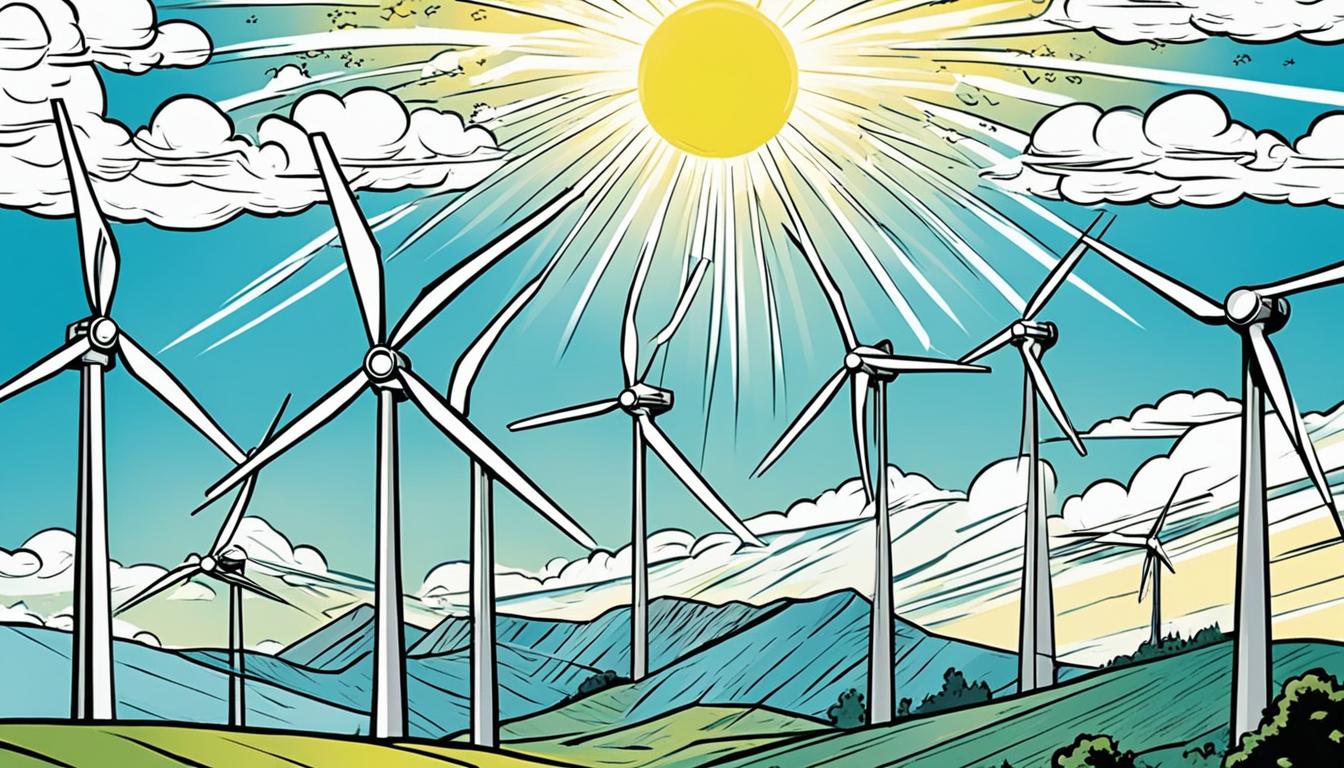We're sitting on a goldmine of geothermal energy, thanks to our 20+ active volcanoes. This natural treasure has the potential to greatly reduce our reliance on fossil fuels and promote energy security. In fact, geothermal power already contributes around 12% to our total electricity generation, making us the second-largest producer globally. We're harnessing the Earth's heat to generate electricity, reducing emissions and promoting a cleaner energy mix. And the best part? This sustainable energy source has notable economic benefits too. Want to know more about how we can reveal its full potential?
Key Takeaways
- The Philippines has an abundant geothermal energy resource, with over 20 active volcanoes and a global ranking of second in geothermal energy production.
- Geothermal energy reduces reliance on fossil fuels, promoting energy security and reducing emissions, with a current contribution of 12% to the country's total electricity generation.
- The production process is environmentally friendly, harnessing Earth's heat from underground reservoirs to generate electricity through hot water and steam-powered turbines.
- Geothermal energy creates significant economic benefits, including job opportunities, foreign investment, and revenue generation, positioning the country as a clean energy leader.
- The Philippines aims to increase its geothermal capacity to achieve its renewable energy targets by 2030, with government support and technological advancements driving sustainable growth.
Geothermal Energy Potential

As we explore the Philippines' abundant geothermal energy, it becomes clear that the country's unique geography, with over 20 active volcanoes, provides a vast and largely untapped resource for electricity generation.
We're not surprised that the Philippines ranks second globally in geothermal energy production, with geothermal power contributing around 12% to the country's total electricity generation. This significant contribution reduces our reliance on fossil fuels, aligning with our goal of promoting energy security and reducing emissions.
With the government's initiatives to develop geothermal energy, we're poised to reveal even more of this natural treasure, securing a cleaner and more sustainable energy future for our nation.
Production Process Explained
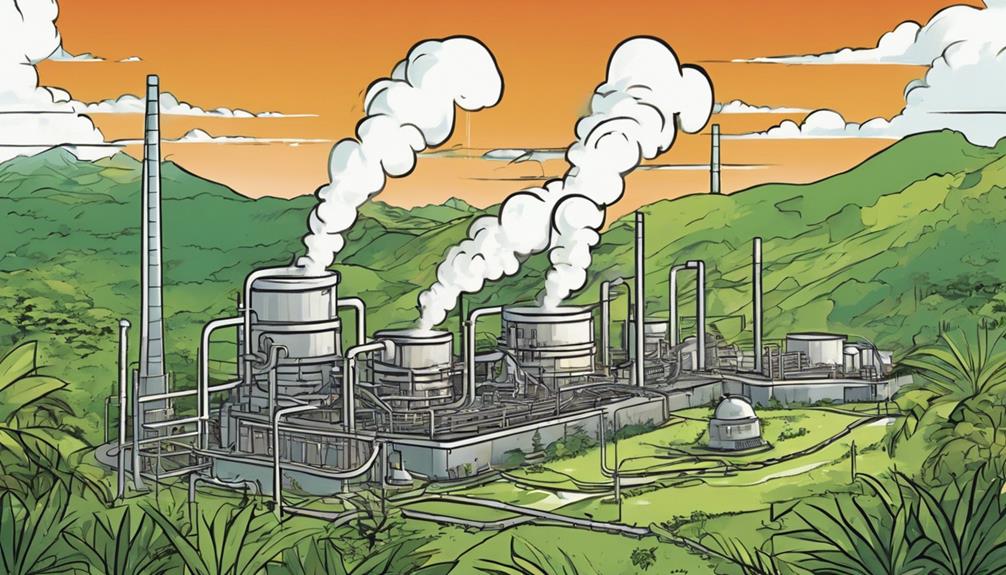
We harness the Earth's heat to generate electricity through a process that involves drilling wells to access hot water and steam reservoirs, which are then utilized to power geothermal plants. This process is both sustainable and environmentally friendly, aligning with our renewable energy goals.
Here's how it works:
- Continuous heat source: We leverage the continuous heat from underground reservoirs to ensure a stable energy supply.
- Electricity generation: The hot water and steam from the reservoirs power turbines, generating electricity that's fed into the grid.
- Minimal environmental impact: Our geothermal power plants are designed to have a minimal footprint, preserving the natural beauty of our surroundings.
Economic Benefits Unlocked
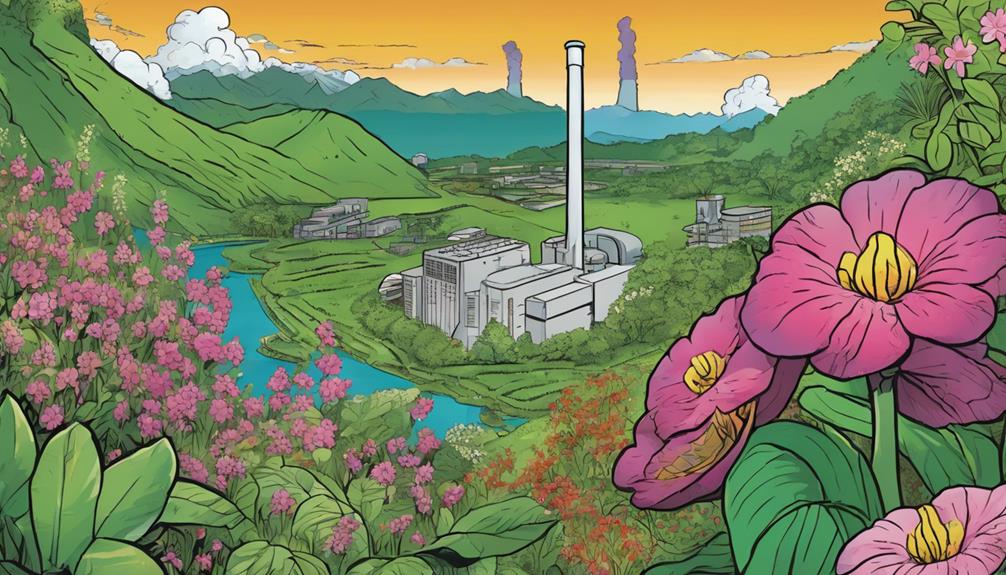
By utilizing geothermal energy, we're creating a significant economic impact, generating job opportunities, and contributing to the country's economic growth.
As we develop geothermal projects, we're attracting foreign investment and promoting technology transfer in the renewable energy sector.
This stable energy output from geothermal sources helps reduce electricity price volatility, making our country more attractive to investors. We're also enhancing energy security, which is critical for our economy's stability.
Additionally, revenue from geothermal projects is bolstering our economy, positioning us as a clean energy leader. By opening up the economic benefits of geothermal energy, we're building a stronger, more sustainable future for our nation.
Challenges to Overcome
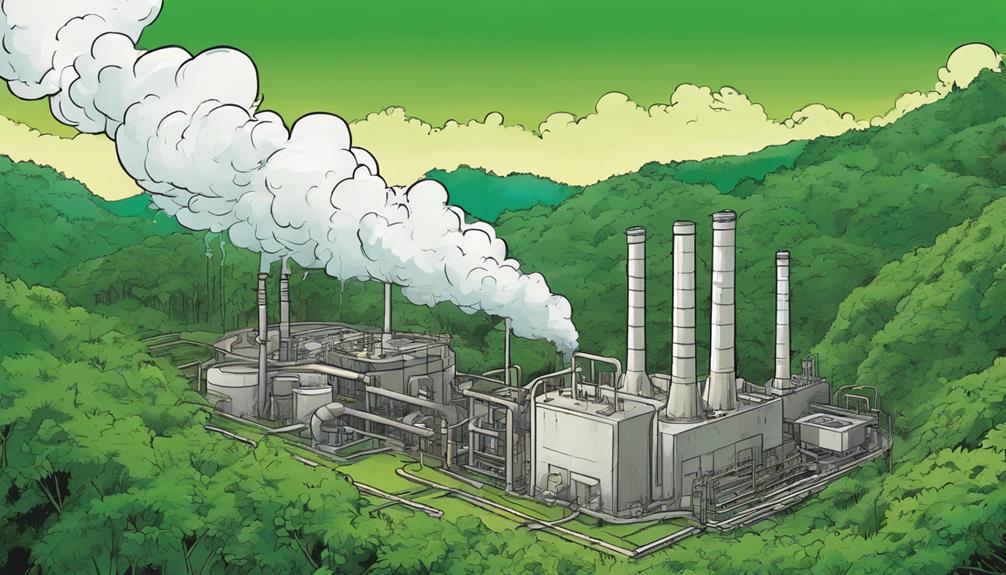
What stands in the way of fully tapping into the Philippines' geothermal energy potential?
Despite its vast resources, the country faces several challenges in developing its geothermal energy sector. We need to overcome these hurdles to realize the full benefits of this clean and reliable energy source.
- High upfront costs: Geothermal exploration and drilling require significant investment, which can pose a barrier to entry for many developers.
- Environmental concerns: We must carefully manage environmental impacts like land subsidence and water usage to secure sustainable development.
- Geological uncertainties: Drilling risks and uncertainties can affect project timelines and costs, emphasizing the need for streamlined regulatory frameworks and advanced exploration techniques.
Future Prospects Ahead
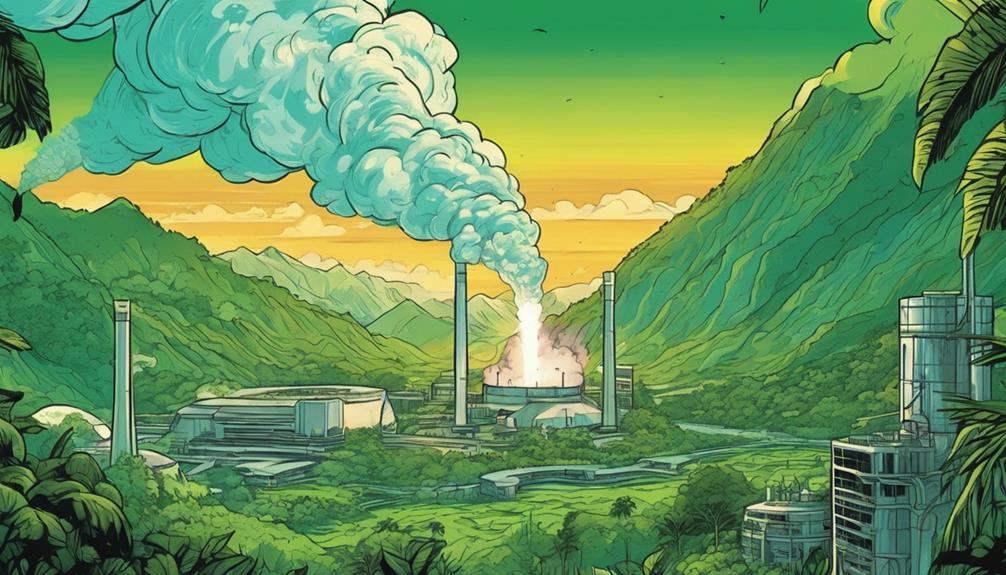
As the Philippines sets its sights on a low-carbon future, geothermal energy is poised to play a key role in achieving its renewable energy targets by 2030.
We're confident that technological advancements in exploration and drilling techniques will enhance resource identification and utilization.
The government's commitment to increasing geothermal capacity is a significant step forward.
We believe that continued government support, policy incentives, and public-private partnerships are essential for sustainable growth in the geothermal energy sector.
As we move forward, we're excited to see geothermal energy contribute to a cleaner, more sustainable energy mix.
With careful planning and collaboration, we can access the full potential of this natural treasure and create a brighter energy future for the Philippines.
Frequently Asked Questions
How Does Geothermal Energy Affect the Local Biodiversity and Ecosystems?
We acknowledge the concern about geothermal energy's impact on local biodiversity and ecosystems; while it's a clean source, we must carefully manage environmental considerations like land subsidence and water usage to minimize its ecological footprint.
Can Geothermal Energy Be Used for Heating and Cooling Buildings Directly?
We're excited to share that 12% of our country's electricity comes from geothermal energy Today, we're exploring if it can directly heat and cool buildings. Yes, geothermal energy can be used for heating and cooling via district heating systems or direct-use applications, promoting energy efficiency and reducing emissions.
Are Geothermal Power Plants Prone to Natural Disasters Like Earthquakes?
We acknowledge that geothermal power plants are located near tectonically active areas, making them vulnerable to earthquakes. However, robust design and strict safety protocols help minimize risks and guarantee plant resilience.
Can Geothermal Energy Be Stored for Later Use During Peak Demand?
We're generating 12% of our electricity from geothermal energy, and now, let's talk storage Surprisingly, our geothermal power plants can't store energy for later use, but we're exploring innovative solutions like thermal energy storage systems to address peak demand.
How Does Geothermal Energy Compare to Solar and Wind Energy in Terms of Cost?
We find that geothermal energy is generally more cost-competitive than solar and wind energy, with lower levelized costs due to its reliable, baseload power generation and reduced intermittent energy storage needs.
How Does the Philippines’ Geothermal Energy Compare to Iceland’s?
The Philippines’ geothermal energy potential is vast, with around 1,900 MW of geothermal power capacity. However, Iceland’s geothermal energy potential is even more impressive, as it provides nearly 90% of the country’s heating and hot water needs, in addition to generating electricity.
How Does Geothermal Energy in the Philippines Compare to Fossil Fuels in Terms of Environmental Impact and Sustainability?
Geothermal energy’s green challenger, fossil fuels, contributes heavily to air and water pollution, whereas geothermal energy is a much cleaner and sustainable option. The Philippines, known for its abundant geothermal resources, is shifting towards this eco-friendly alternative to reduce its environmental impact and ensure a more sustainable energy future.
How Does Iceland Utilize Its Geothermal Energy Compared to the Philippines?
Iceland’s geothermal power unleashed is harnessed for both electricity and heating, supplying nearly 90% of households. In contrast, the Philippines heavily relies on fossil fuels for power generation, with only a small portion coming from geothermal sources. Iceland’s advanced geothermal technology sets it apart, making it a global leader in sustainable energy utilization.
How Does Iceland’s Geothermal Energy Compare to the Philippines’?
Iceland’s geothermal energy power is a significant source of renewable energy, providing heating and electricity to a large portion of the country. In contrast, the Philippines also has significant geothermal resources, but currently only utilizes a small fraction of its potential. Iceland leads in harnessing geothermal energy, while the Philippines has room for growth.
Conclusion
As we harness the power of our volcanoes, it's no coincidence that our geothermal energy production is heating up. With 12% of our electricity generation coming from this natural treasure, we're reducing our fossil fuel dependence and paving the way for a low-carbon economy.
As we look to the future, we're excited to tap into the vast potential of geothermal energy, revealing economic benefits and overcoming challenges along the way.



